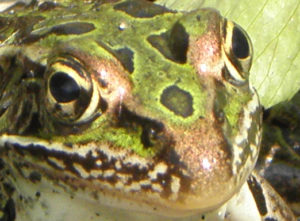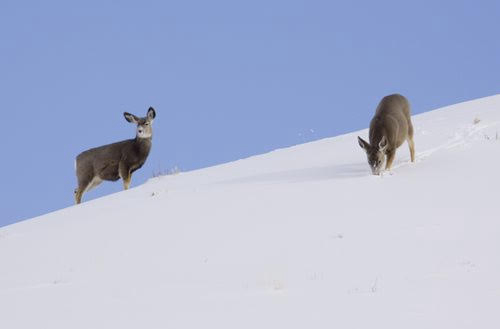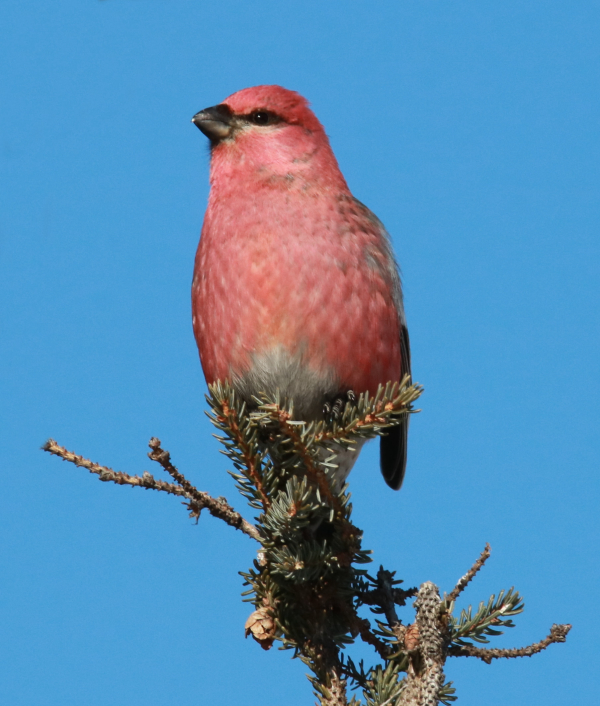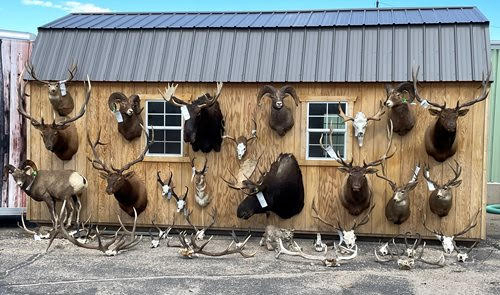How to Participate in Michigan’s Frog and Toad Survey
By Glen Wunderlich
In the recent history of some 29 years, the dirt road in Shiawassee County on which I’ve lived, has never flooded; that’s all changed now. Recent rains coupled with accumulated snow and frozen grounds have rivers and creeks spilling over the banks. As a result, our swampland will soon be host to a bumper crop of frogs and toads.
I’ve learned to enjoy the company of these insect-consuming creatures, as they hunt for food that hunts for me. In fact, each season we form a partnership of sorts.
At the bottom threshold of the garage door is a small opening that allows opportunistic toads the perfect ambush point. Inside they face the opening in wait for unsuspecting prey of myriad configurations. Out comes the tongue and in goes a nutritious meal.
Their tongues produce quantities of mucus to aid in swallowing. All anurans (toads and frogs) blink when they swallow. The eye is subsequently pushed against the roof of the mouth, forcing the food farther back.
The parotoid glands – the swellings behind the eyes – are a defense mechanism against predators. These glands secrete fluids that are toxic if taken internally and the warts (on some toads) exude a similar toxin. Some toads can squirt poison at potential predators from these glands. And despite the myth, toads do not cause warts!
One of my favorite pastimes involves catching insects and dropping them directly in front of one of my “pets.” In a heartbeat the drama is over.
No doubt, frogs and toads play a vital role in insect control but their numbers, as well as that of other amphibians, have been in decline since the 1980s because of habitat loss, pollution, disease and collection.
The Michigan Department of Natural Resources is seeking volunteers throughout the state to assist with its annual frog and toad survey – an effort that helps biologists monitor frog and toad abundance and distribution in the state.
“In Michigan, over the past 20 years, we’ve noticed a decline in Fowler’s toads and mink frogs,” said Lori Sargent, the DNR’s frog and toad survey coordinator. “These are two species that have a limited range in Michigan, unlike most of the other species that occur statewide.”
Michigan’s is the second-longest-running such survey in the country, after Wisconsin’s.
“We have collected a large, valuable data set to help us evaluate Michigan’s frog and toad populations,” said Lori Sargent, the DNR’s frog and toad survey coordinator. “We’re now able to watch trends and consider how to slow down some of the species’ declines.”
The surveys are conducted by volunteer observers along a statewide system of permanent survey routes, each consisting of 10 wetland sites. These sites are visited three times during spring, when frogs and toads are actively breeding. Observers listen for calling frogs and toads at each site, identify the species present and make an estimate of abundance.
Sargent said new volunteers are needed in all parts of the state, and that the program’s continued success is dependent on strong volunteer support.
Those interested in volunteering should contact Lori Sargent at 517-284-6216 or SargentL@michigan.gov. More information on the frog and toad survey and other projects supported by the Nongame Fish and Wildlife Fund is available at www.michigan.gov/wildlife.
Even if you choose not to become a survey volunteer, the website has audio training tracks that can be downloaded so that interested persons can learn the sounds these creatures emit. In fact, I never knew toads made calls similar to those of frogs. Armed with the newfound information, springtime will have my ear.







